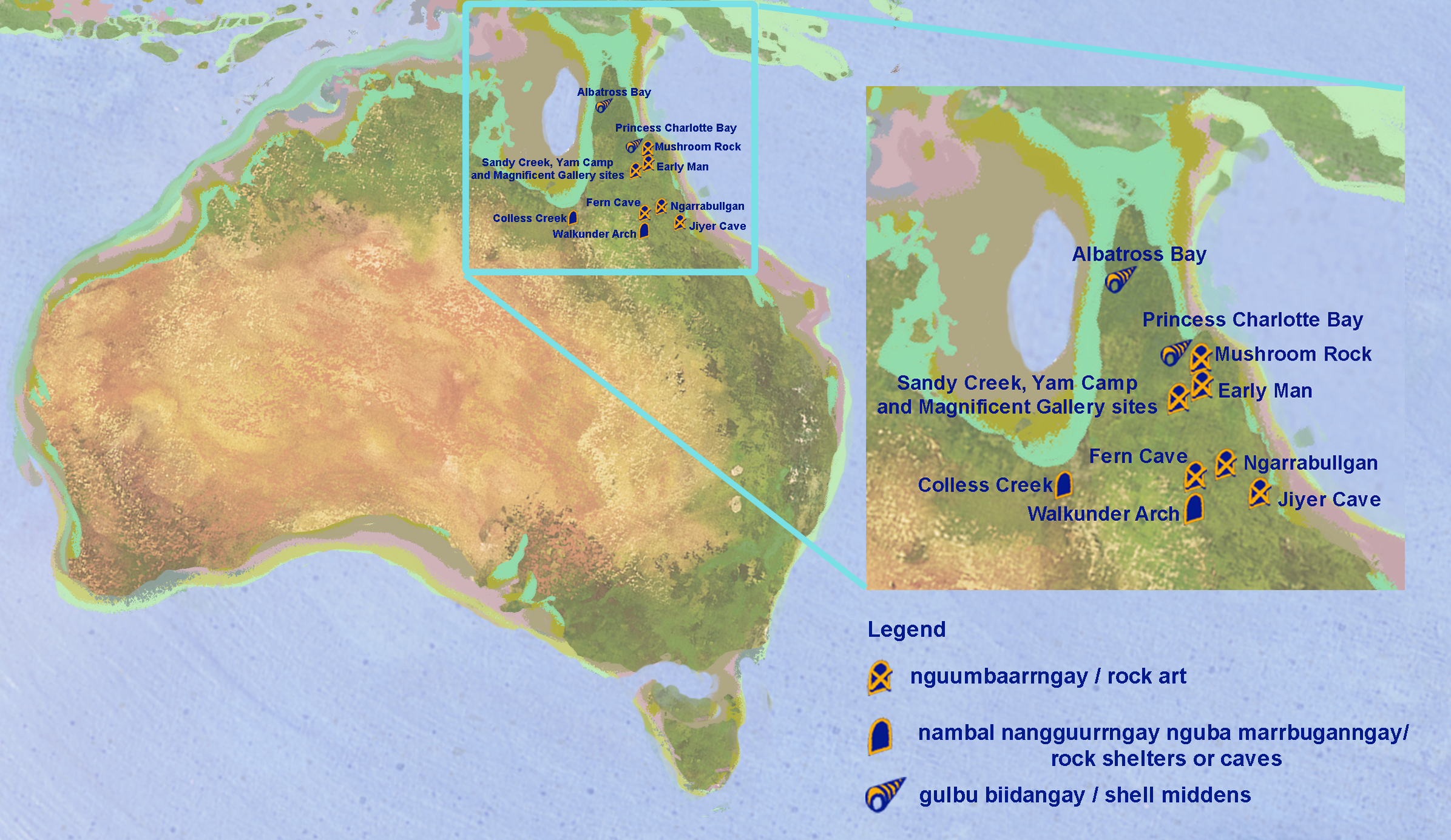Some Important Sites in Queensland (Guugu Yimithirr)
Some Important Sites in Queensland (English)
Language Points
Guugu Yimithirr
Our people have passed down a lot of information about the deep past through stories, songs and art. Everything is connected to Country, and in many places we find traces of our ancient presence. Here we will look at some old sites closer to Guugu Yimithirr country that reveal to us information about the deep past of our people. Some of these sites are rock shelters or caves where the ustensiles and stone objects of our ancestors have been found in the ground, in other sites rock art is present. We know that our people camped in some of these places long ago because the bones of the animals they hunted, what remains of some of the plants they ate and the shells they discarded after eating the shellfish have been found in the ground.
Shell middens show that people were living along the coasts and living from the resources of the sea. Sometimes it is not easy to know if the shells have collected naturally in one spot or if our ancestors have placed them in a great big pile. Researchers and traditional owners have found that people intentionally created not only single mounds, but entire landscapes of mounds. In other words, it was cultural practices that led to the deposition of shells to form mounds. Older shell middens may have been covered by the rising sea and are now underwater, where the coastline used to be.
English
Our people have passed down a lot of information about the deep past through stories, songs and art. Everything is connected to Country, and in many places we find traces of our ancient presence. Here we will look at some old sites closer to Guugu Yimithirr country that reveal to us information about the deep past of our people. Some of these sites are rock shelters or caves where the ustensiles and stone objects of our ancestors have been found in the ground, in other sites rock art is present. We know that our people camped in some of these places long ago because the bones of the animals they hunted, what remains of some of the plants they ate and the shells they discarded after eating the shellfish have been found in the ground.
Shell middens show that people were living along the coasts and living from the resources of the sea. Sometimes it is not easy to know if the shells have collected naturally in one spot or if our ancestors have placed them in a great big pile. Researchers and traditional owners have found that people intentionally created not only single mounds, but entire landscapes of mounds. In other words, it was cultural practices that led to the deposition of shells to form mounds. Older shell middens may have been covered by the rising sea and are now underwater, where the coastline used to be.
Map
Hover and click on the hotspots to find out more about these sites.
Acknowledgments: Morwood, M.J. and D.R. Hobbs. 1995. Themes in the Prehistory of Tropical Australia, pp.748-749. In Allen, J. and J.F. O’Connell. 1995. Transitions, Pleistocene to Holocene in Australia and Papua New Guinea. Antiquity, vol. 69, Special Number 265

